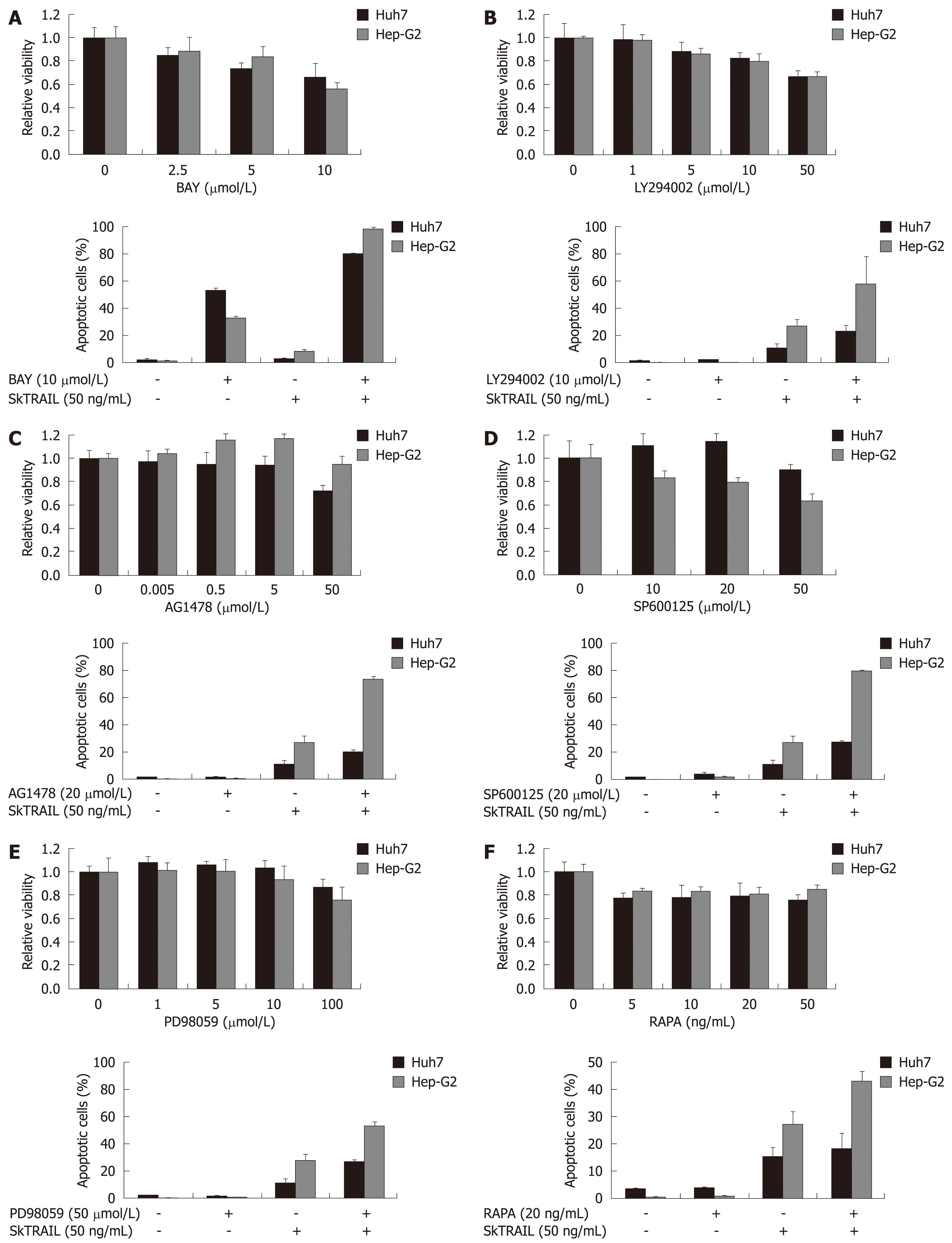Copyright
©2009 The WJG Press and Baishideng.
World J Gastroenterol. Dec 21, 2009; 15(47): 5924-5935
Published online Dec 21, 2009. doi: 10.3748/wjg.15.5924
Published online Dec 21, 2009. doi: 10.3748/wjg.15.5924
Figure 4 Treatment of HCC cells with TRAIL in combination with specific kinase inhibitors.
Viability of HCC cells treated with kinase inhibitors alone (upper panels). On day one after seeding of Huh7 and Hep-G2 cells onto 96-well plates, cells were treated with multi-kinase inhibitor Sorafenib (A), PI3 kinase inhibitor LY294002 (B), EGFR kinase inhibitor AG1478 (C), JNK inhibitor SP600125 (+ 0.2% DMSO as vehicle) (D), MEK inhibitor PD98059 (E) and mTOR inhibitor rapamycin (RAPA) (F) at the indicated concentrations for 48 h. Cell viability was analyzed by MTT assay. Viability is shown relative to untreated or 0.2% DMSO treated controls, respectively. Assays were performed in six-fold values. Values are expressed as mean ± SD. Apoptosis induction in Huh7 and Hep-G2 cells treated with 10 μmol/L Sorafenib (A), 10 μmol/L LY294002 (B), 20 μmol/L AG1478(C), 20 μmol/L SP600125 (+ 0.2% DMSO as vehicle) (D), 50 μmol/L PD98059 (E) and 20 ng/mL rapamycin (F) in combination with 50 ng/mL SkTRAIL (lower panels). Cells were seeded 1 d before treatment onto 12-well plates, harvested 48 h after treatment and analyzed for apoptosis induction by flow cytometry. Assays were performed in triplicate and are representative of at least two independent experiments. Values are expressed as mean ± SD.
- Citation: Koehler BC, Urbanik T, Vick B, Boger RJ, Heeger S, Galle PR, Schuchmann M, Schulze-Bergkamen H. TRAIL-induced apoptosis of hepatocellular carcinoma cells is augmented by targeted therapies. World J Gastroenterol 2009; 15(47): 5924-5935
- URL: https://www.wjgnet.com/1007-9327/full/v15/i47/5924.htm
- DOI: https://dx.doi.org/10.3748/wjg.15.5924









